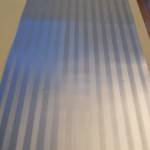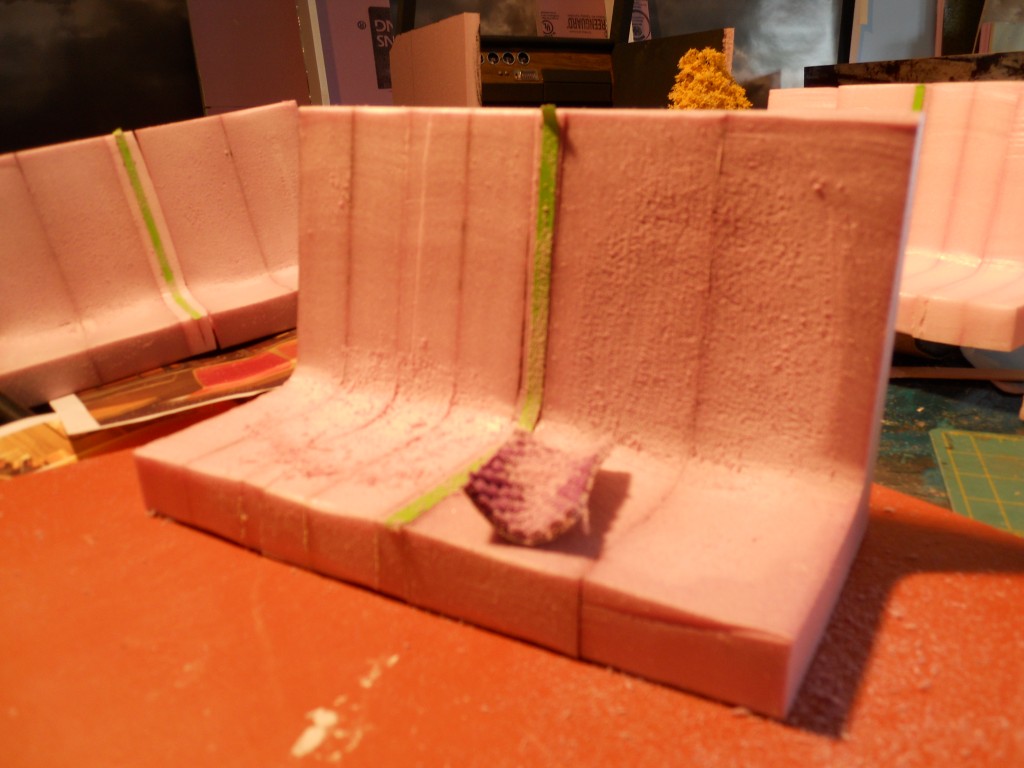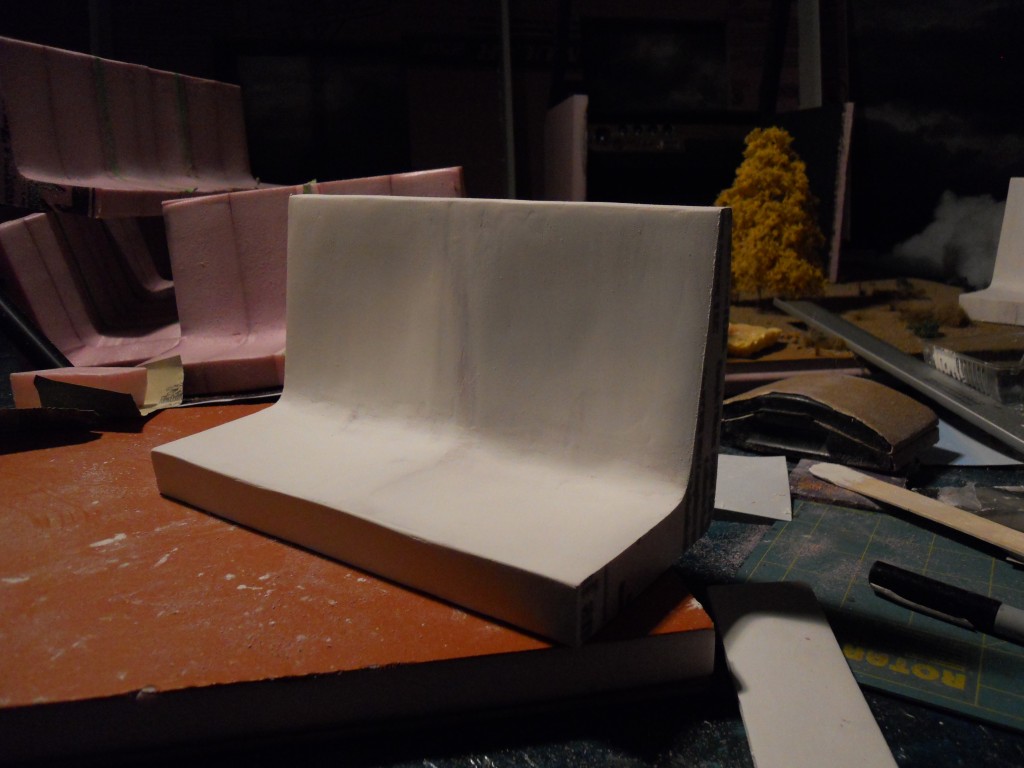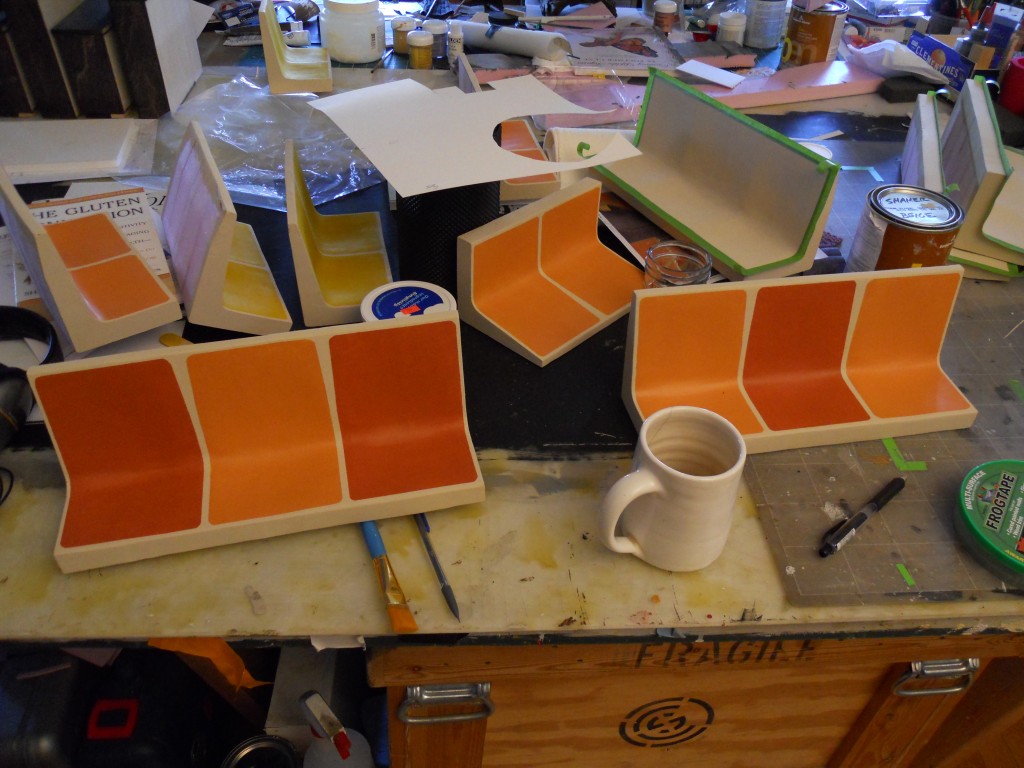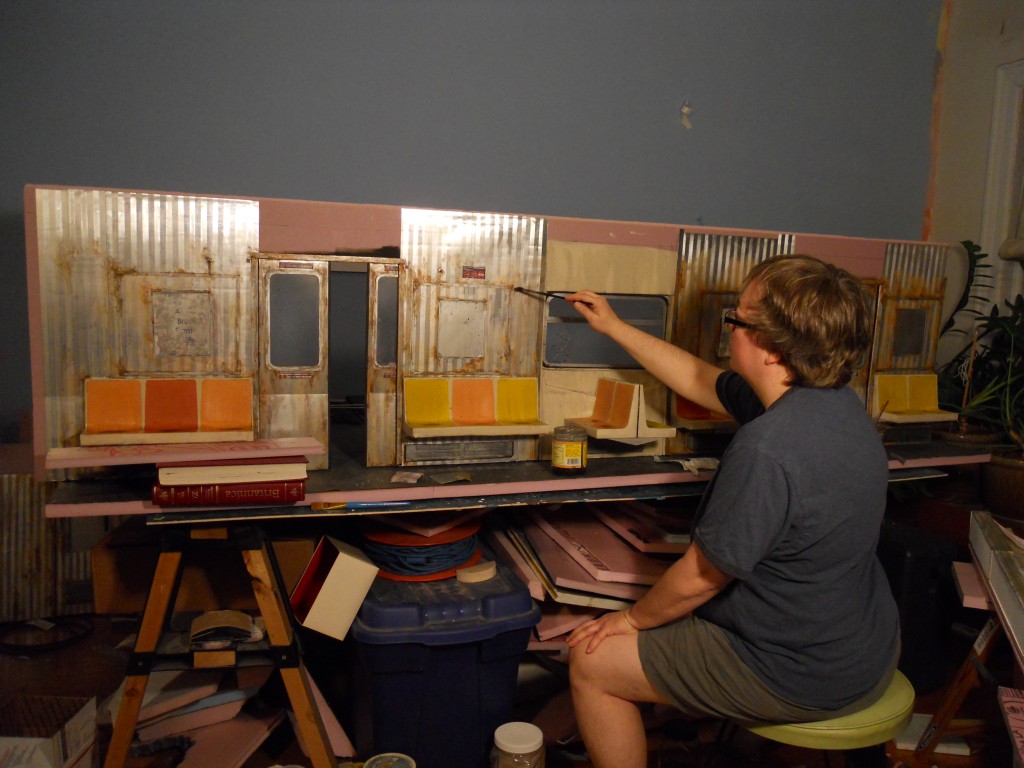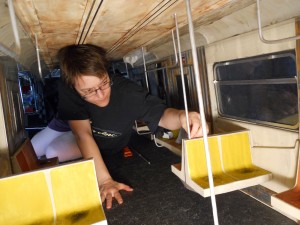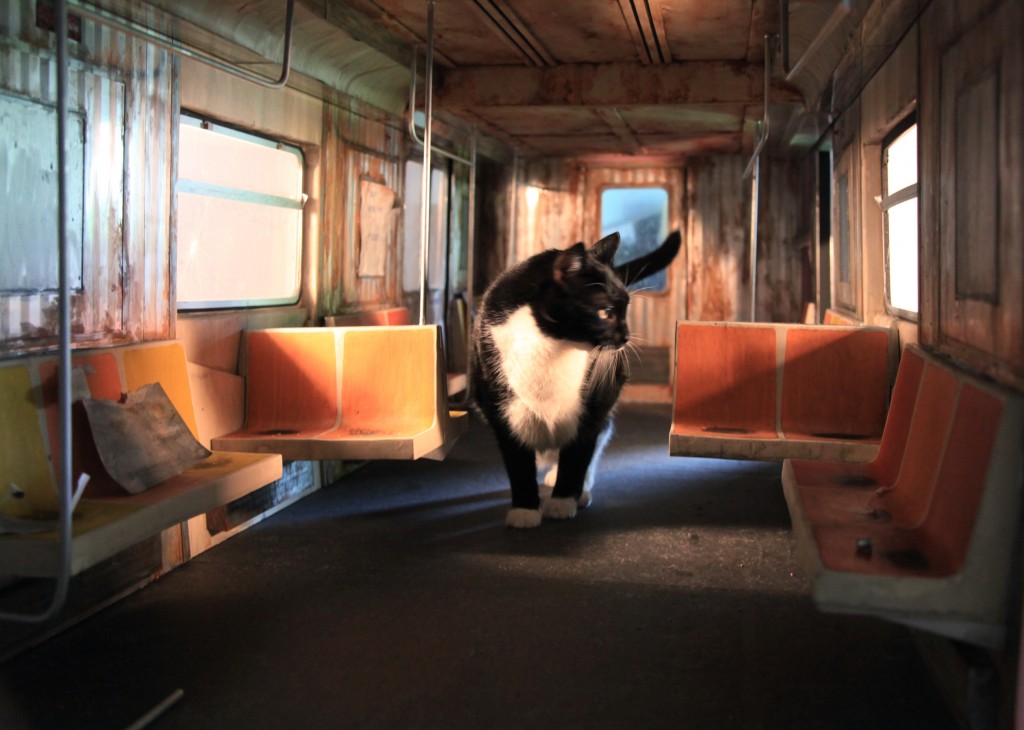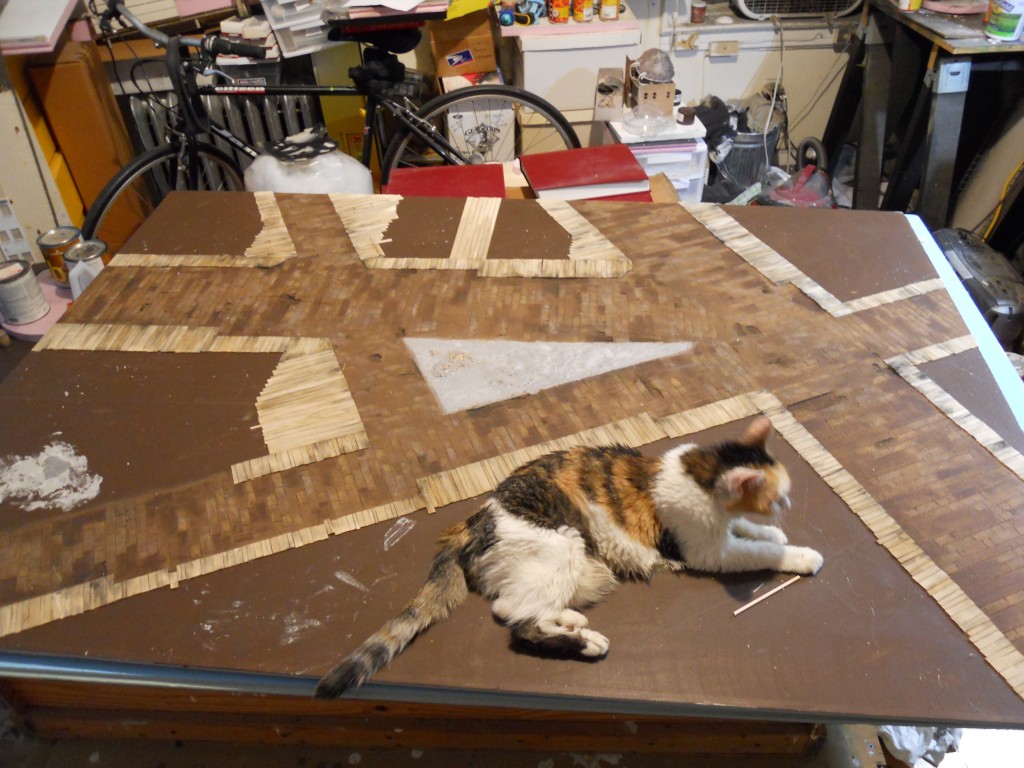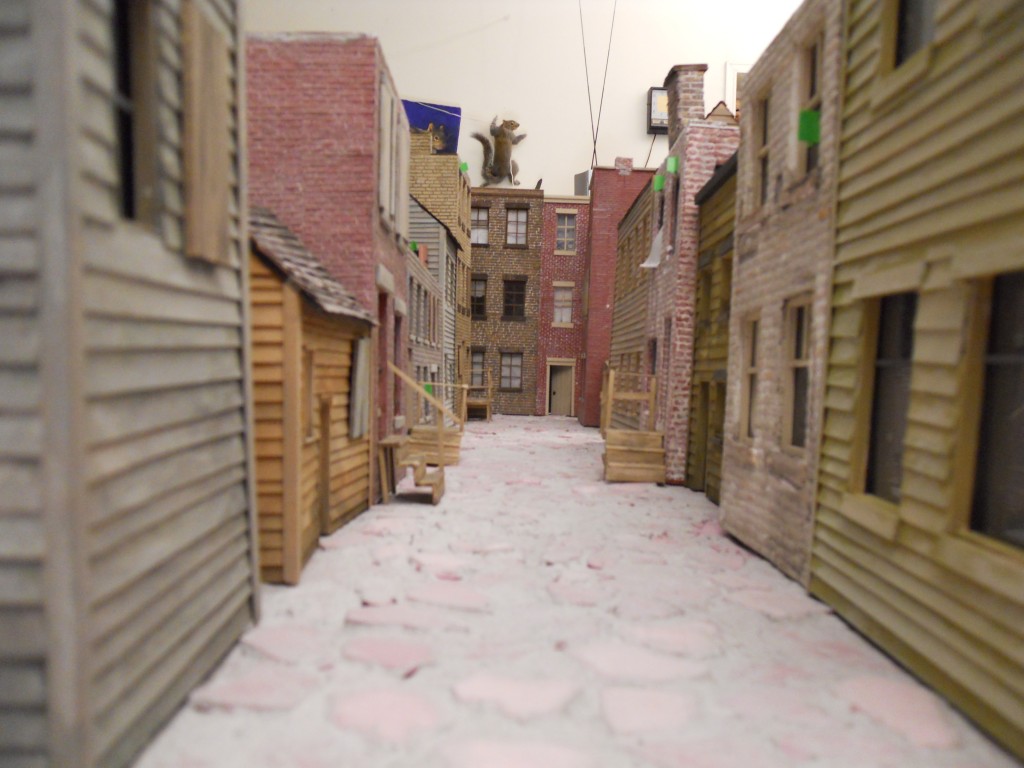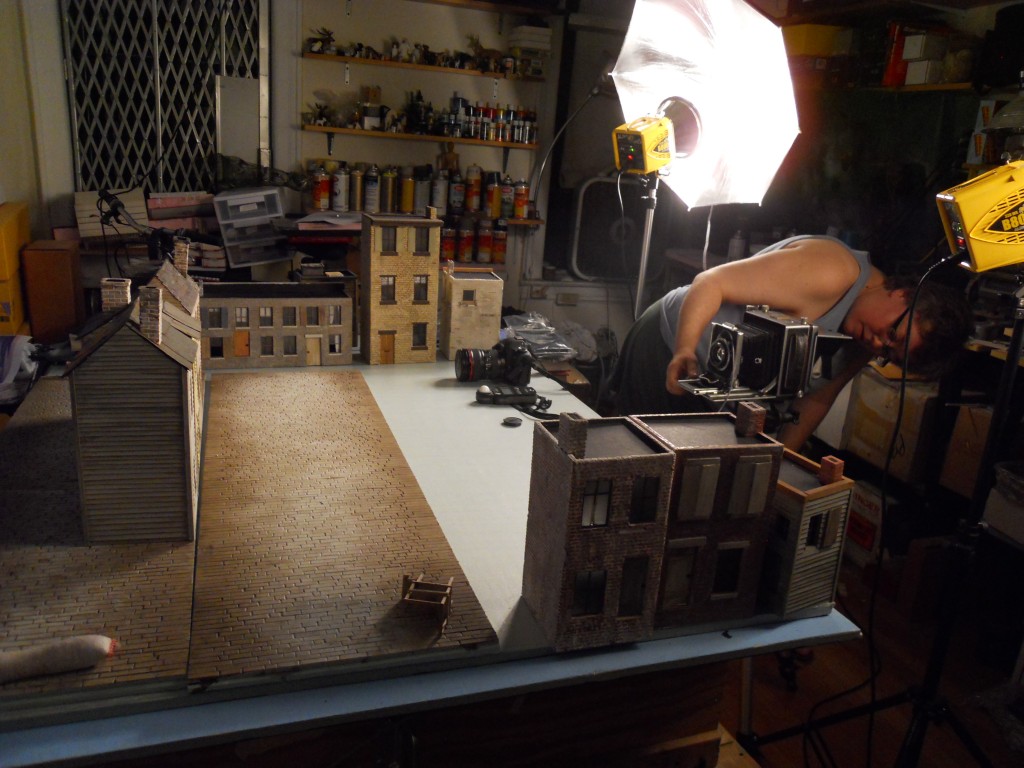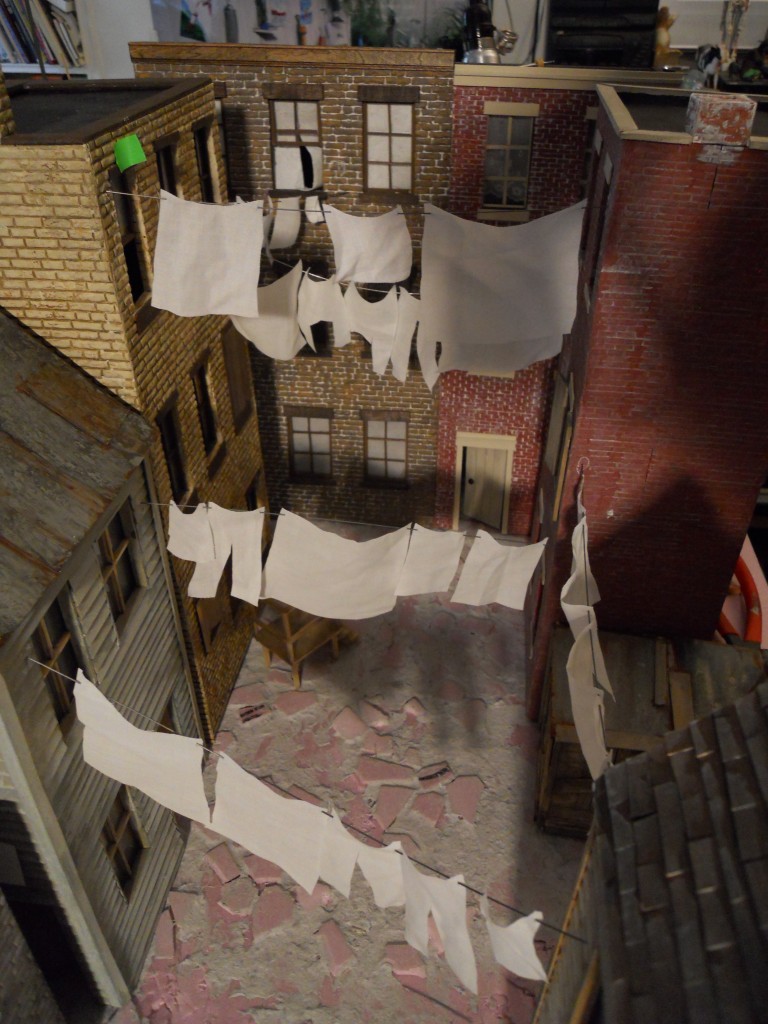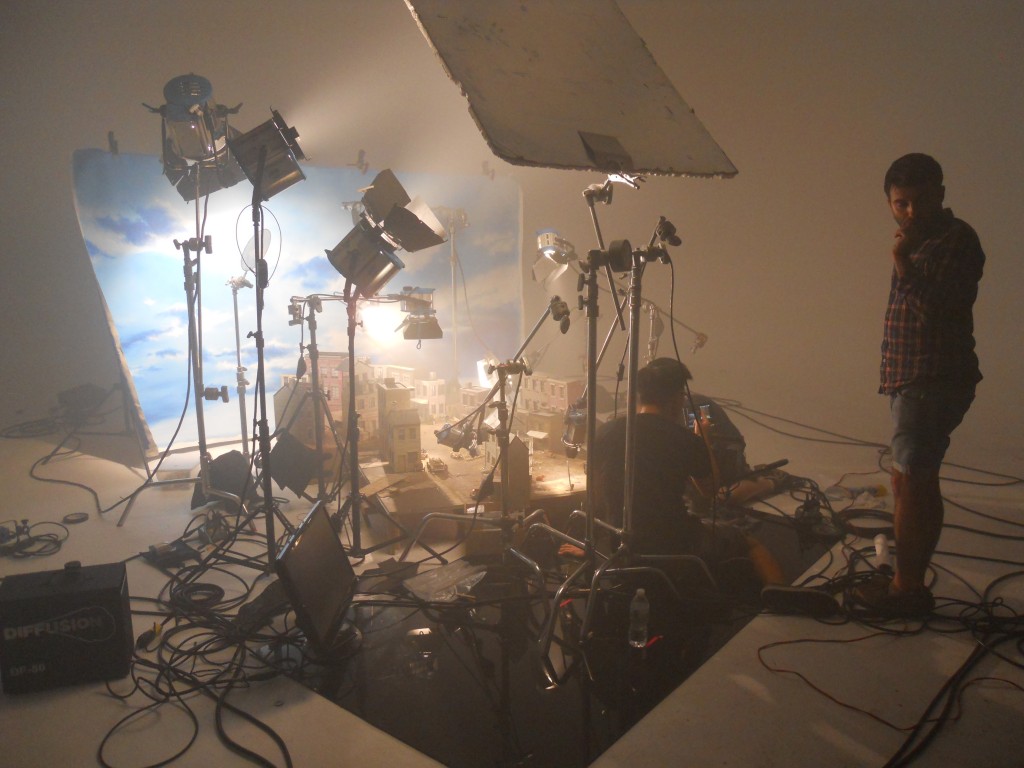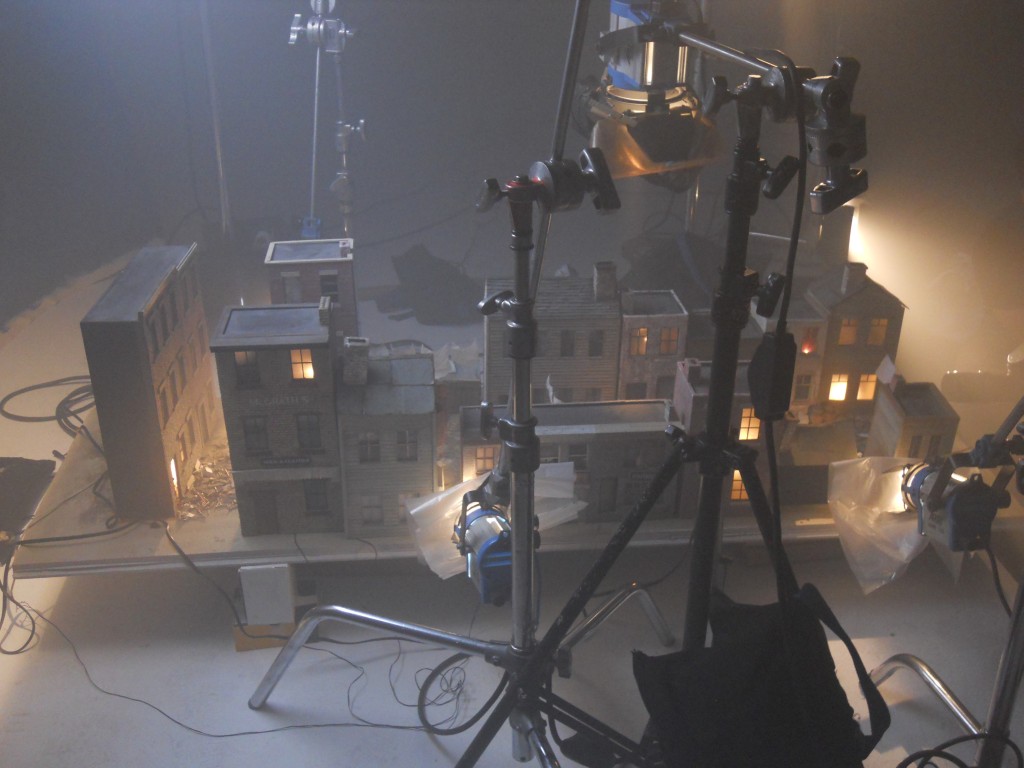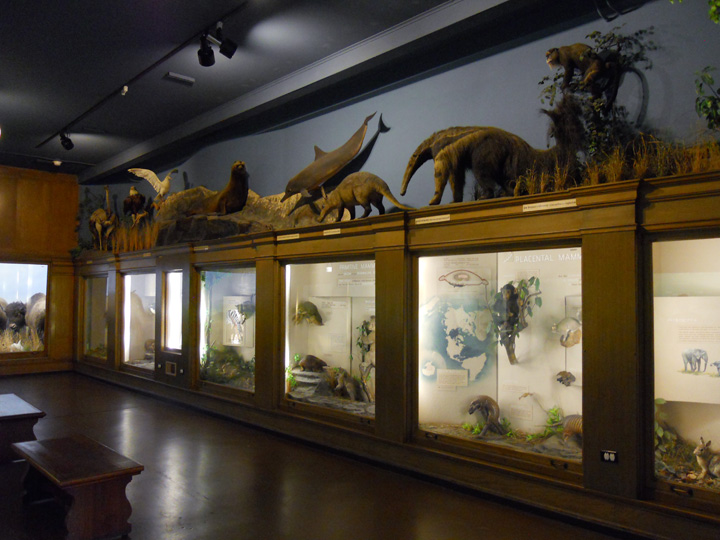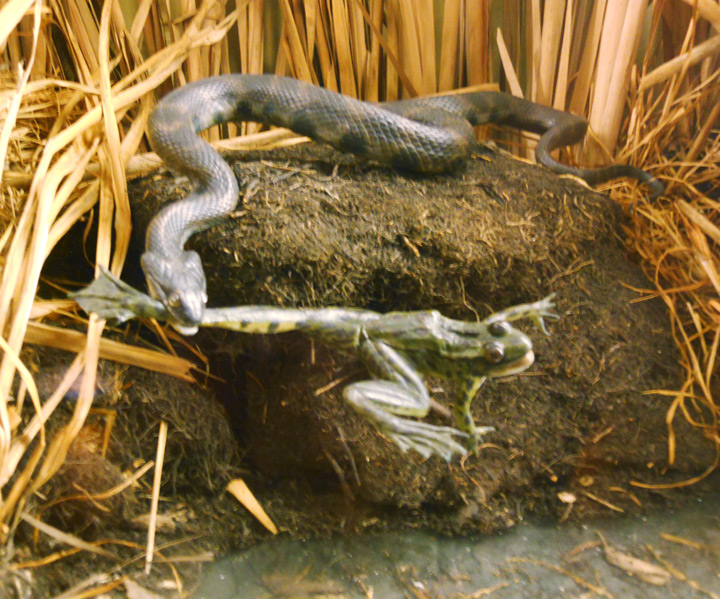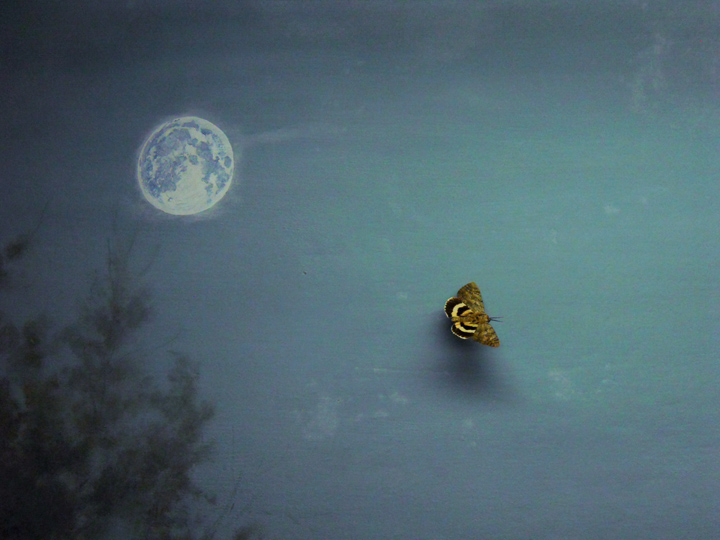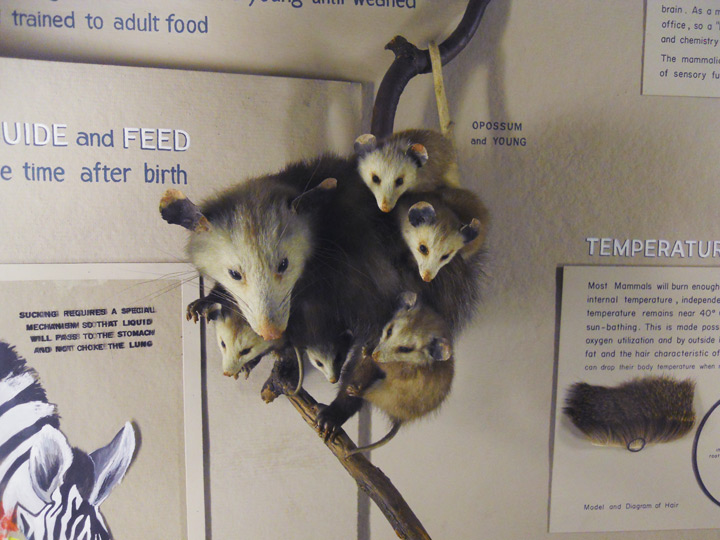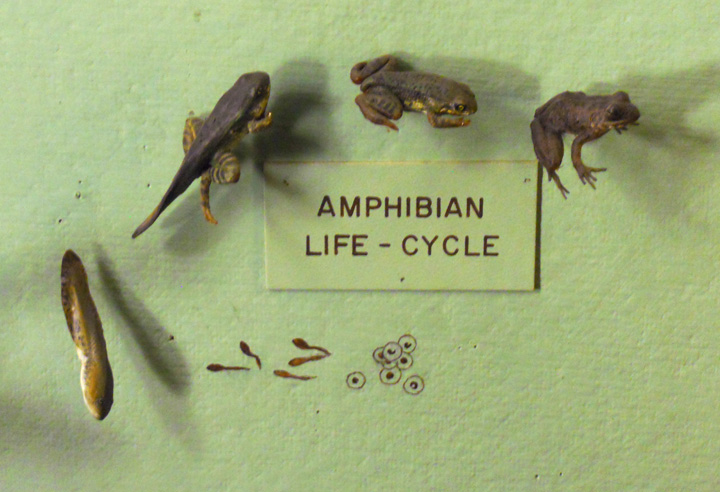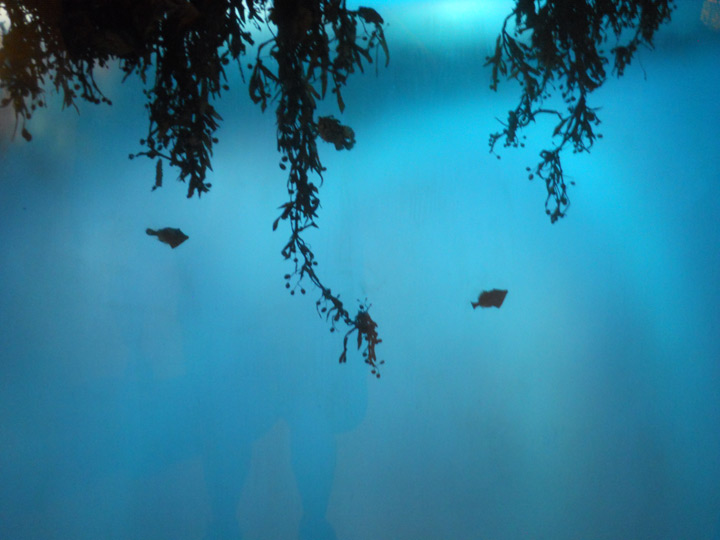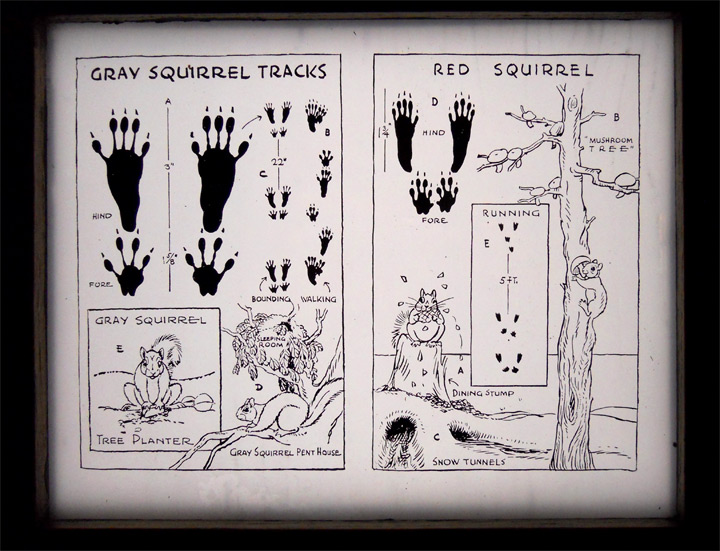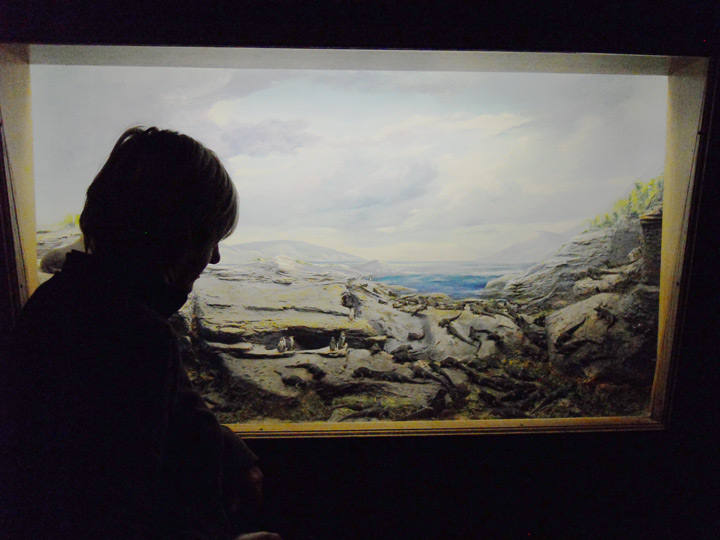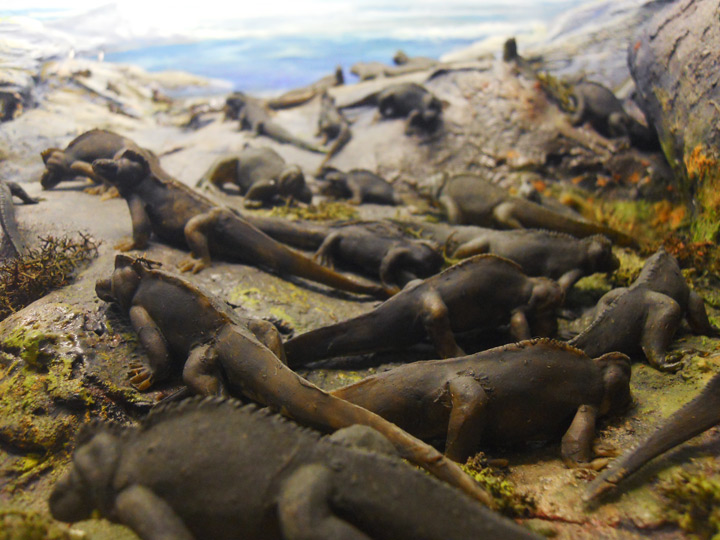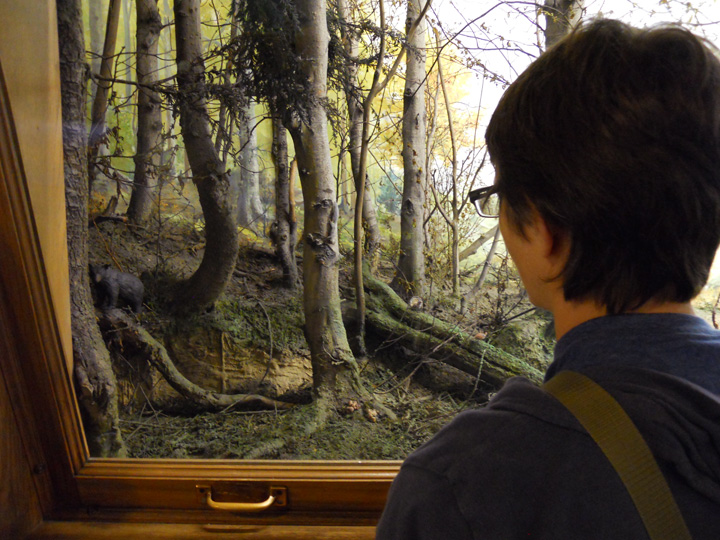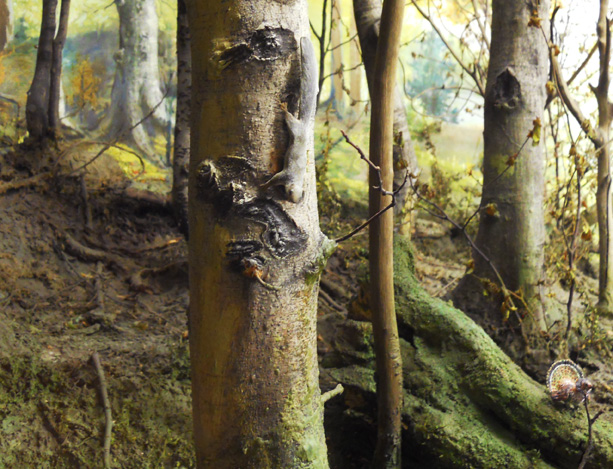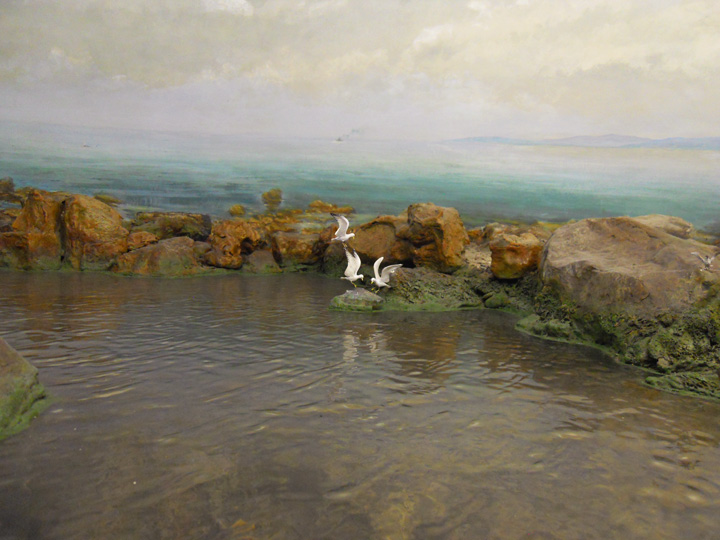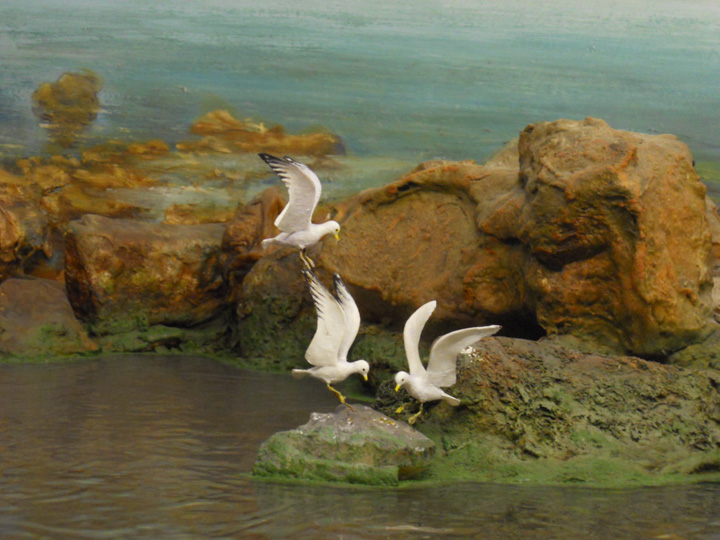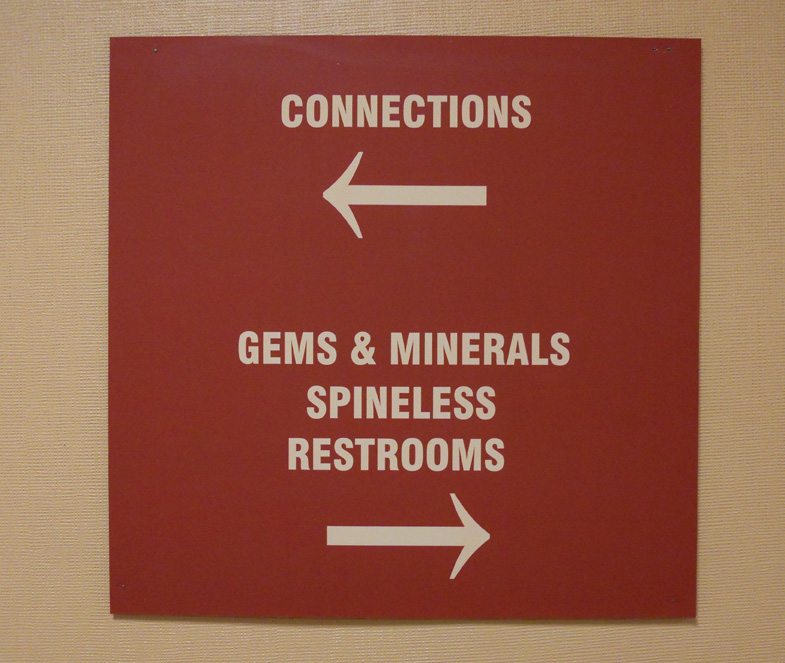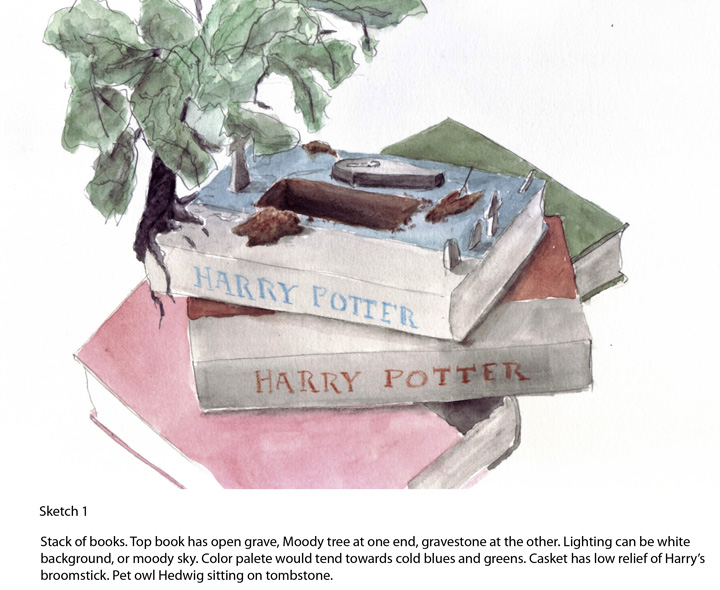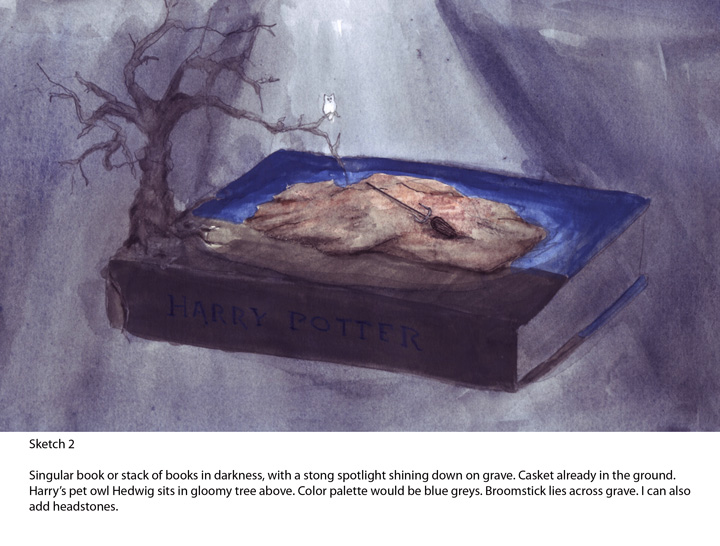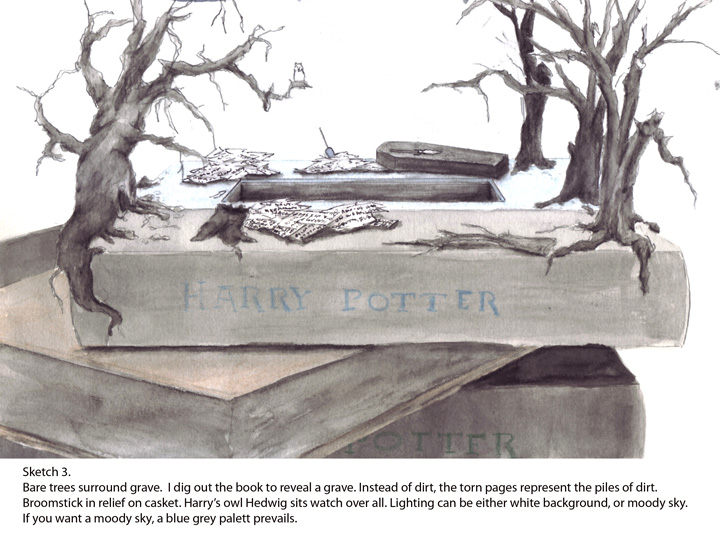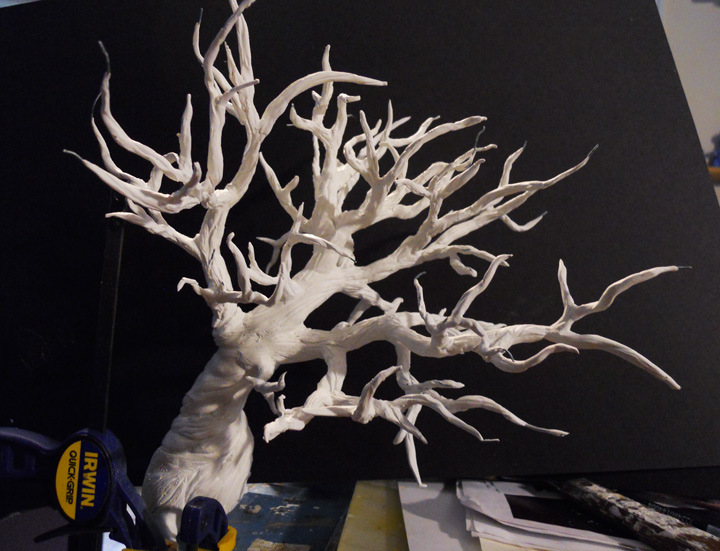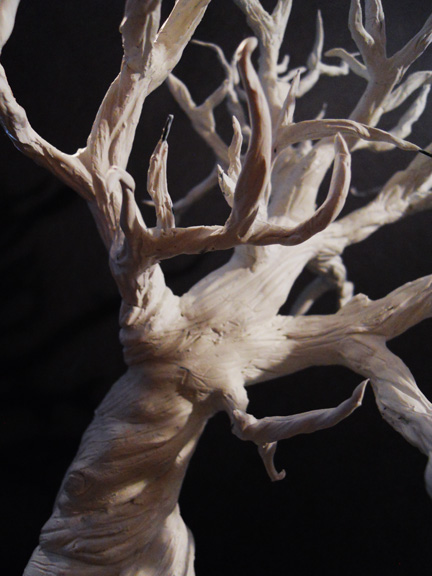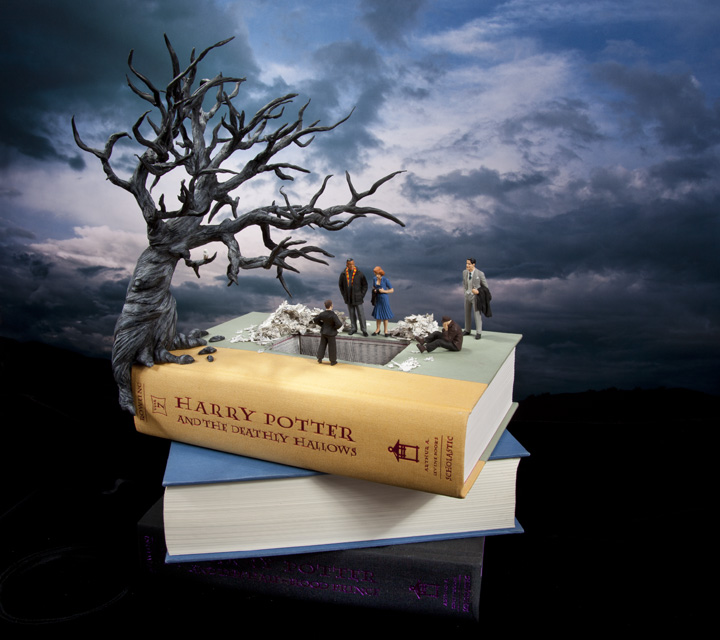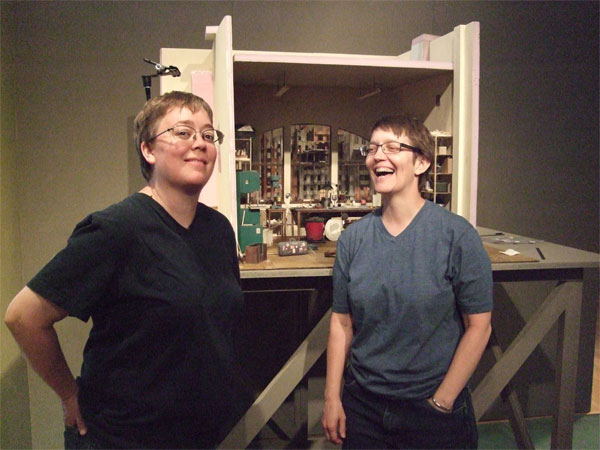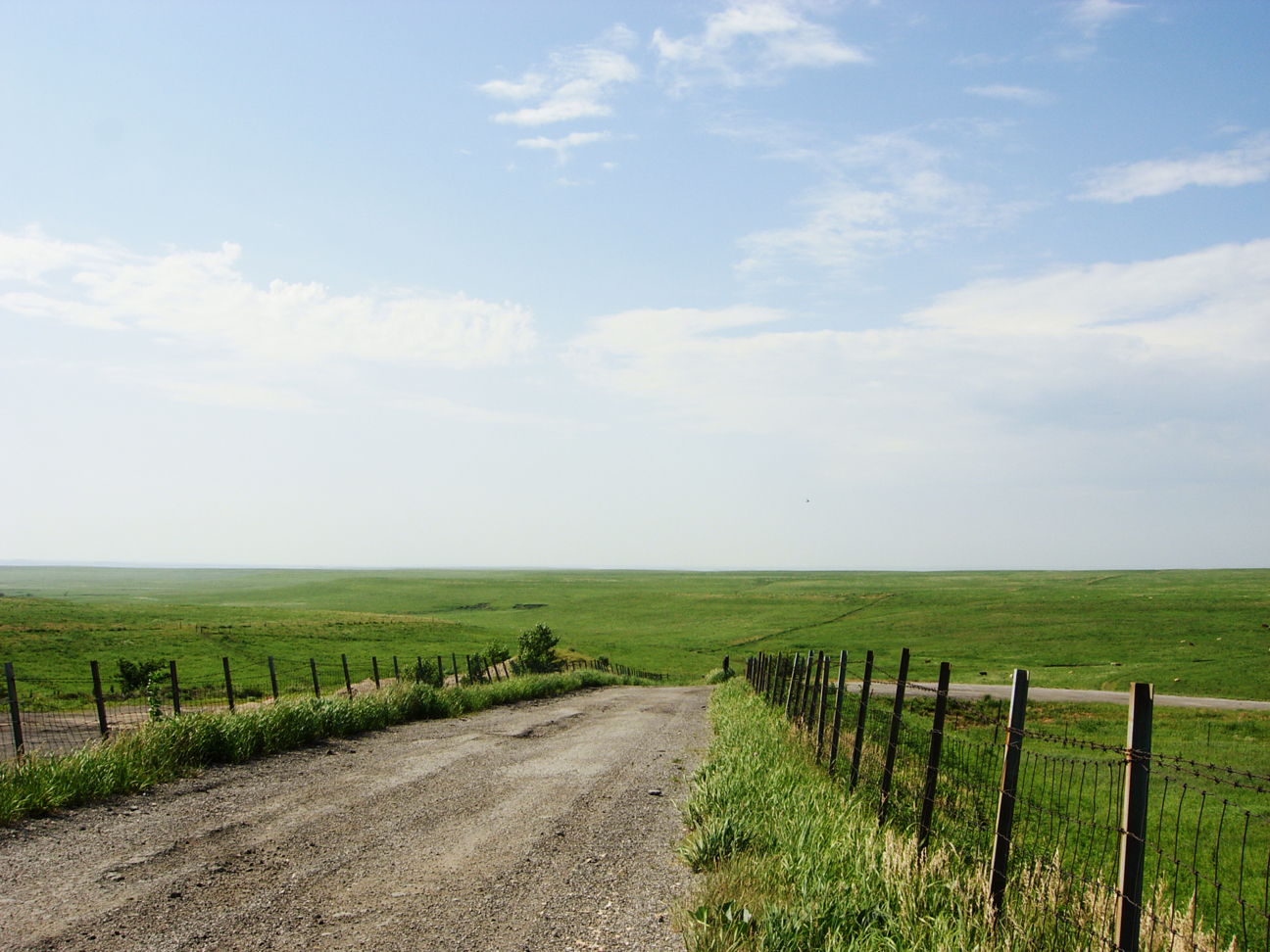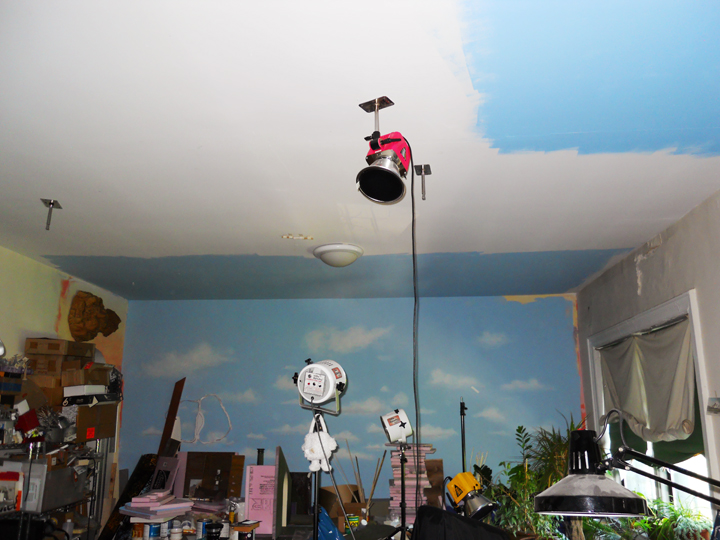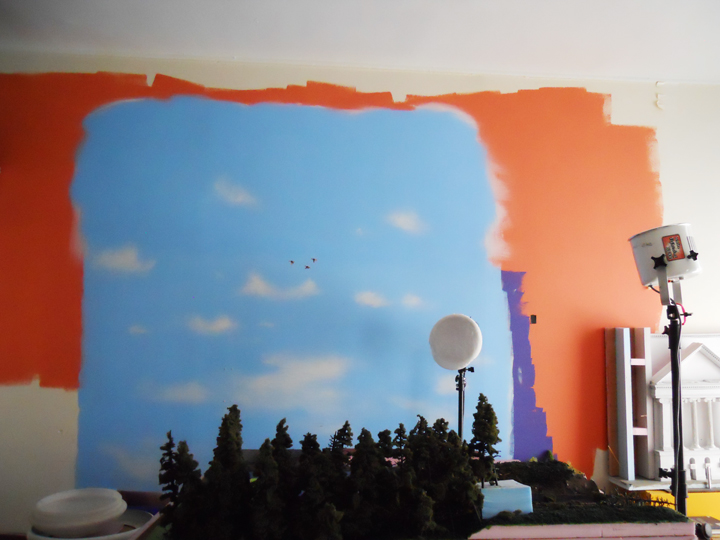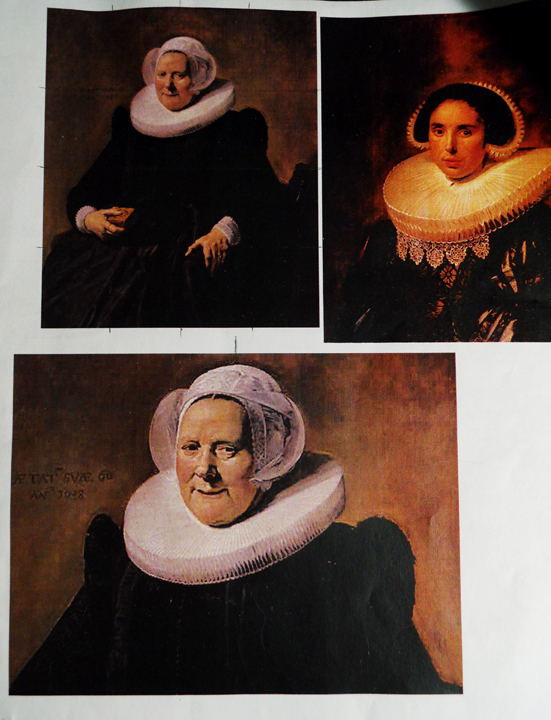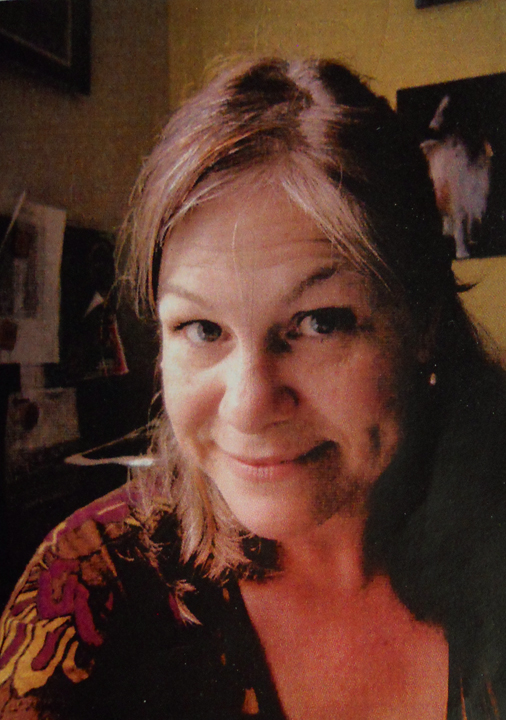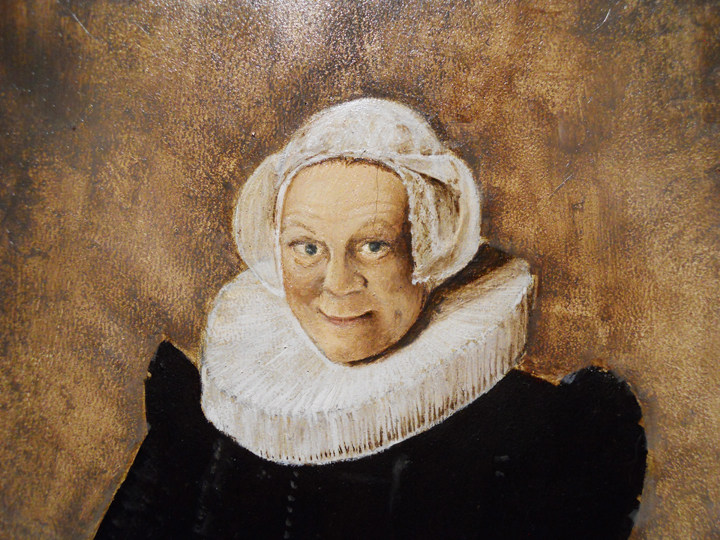See the video now.
http://vimeo.com/36994466

This past fall we were invited to be a part of an exciting and memorable project. Our new good friend, Joe Sabia, was putting together a team to create a video about sustainable sushi. Inspired by a conversation with chef Kristof0r Lofgren of Bamboo Sushi in Portland, Oregon(theU.S.’s first certified sustainable sushi restaurant), he wanted to help Kristofer’s efforts to spread the message about the need for better commercial fishing practices. Joe has a background in television and video, and is a passionate and skillful storyteller. His talents seemed like the perfect fit for Kristofer’s message.
From the beginning Joe imagined this “story of sushi” to be told using models, and luckily for us, word of mouth and some internet searching led him to Lori’s website. He liked the possibility of using the models to create another world and appreciated the detailed nature of Lori’s photographs. The whole idea of making miniature sets for somebody else to work with was intriguing as well as scary. We had never worked with other artists like this, but it is a great cause and also seemed like the end result could be something pretty special. The project would definitely push us out of our comfort zone and interrupt our usual studio production, but it would also be a good opportunity to move our skills to the next level, both in terms of what we could physically produce and also what we could offer a client commercially in the future. (Always afraid the “art” might dry up, we are perpetually trying to nurture our other options.)
Ideas were discussed and a general storyline was hammered out. We then drew out a storyboard (first time for everything) to further refine the narrative and provide a shot sequence. It was decided that Lori and I would build 5-7 sets, each illustrating a step along the sushi path – from the fishing boat all the way to the restaurant table. The specifics were left up to us. So, we retreated to our respective corners to get to work. Knowing that the ‘detail work’ would fall to me, I started reading up on the world of sushi fishing and commercial fish markets. Lori started making lists and sourcing materials to begin building the structures we would need. Thank God for the internet!
Now, the beauty of making dioramas for Lori’s photographs is that she knows exactly what viewpoint she wants to have from the outset. All the elements of the scene are then made with that viewpoint in mind. Backs of structures are often unpainted or unfinished because we know that the camera will never see it. But, building dioramas for someone else to film, not knowing what crazy angle they may want to shoot or what close-up they may take, was quite nerve wracking and made us (me) overbuild the scenes even more than usual. One of my biggest fears, was them wanting to film a particular shot and not being able to do so because what I had made was not detailed enough or somehow incomplete or incorrect. For example: I made numerous fish of various species, but I tried to make sure that they would be from the same part of the ocean (mostly- I got really tired near the end). That the type of fishing boat we depicted, and the method of catching fish, were in line with the type of fish and by-catch I sculpted. That the tables and storage containers were appropriate for the type of market. It got a little crazy at times with Lori saying “What does it matter if the blah blah blah blah?” and me answering “That’s not how it really would be, that doesn’t really yada yada yada” and then some strained silence for a while. But we managed…
And we kept working. We knew we had about four months to get these eight dioramas made. (Thankfully the deadline got extended!) Some were very direct and contained. Others were sprawling and involved a lot of smaller elements. We would email in-progress images to keep Joe in the loop. By now a director of photography/cameraman was also on board, Vincent Peone. He visited the studio with Joe and had a lot of great ideas for how to shoot the scenes. We met a couple times during production of the dioramas, and each meeting left us feeling even more excited about the project. This was Lori and my first big commercial job and we really wanted it to go well. Previous jobs were much more short term, a couple weeks at best. This job was proving to be a real test of our stamina, both mental and physical.
One amazing sidebar to all of this work was an excursion to Montauk to get a close look at commercial fishing. Through chef Kristofer, we were able to meet Michael Dimmock, who is head of an awesome company, Sea to Table. They work with fisherman to get their catch into the hands of chefs in the most direct way possible. Because of their efforts fishermen get a fair price, and chefs and restaurants get insanely fresh seafood (it usually arrives the next morning) to prepare for their customers. It’s a beautiful thing. Michael gave us the insiders tour where we got to see boats up close, watch fish being processed and packaged for quick shipping, and just witness a completely different way of life. It was fantastic!
Back in the studio, shooting day approached. By now the dioramas were taking over the majority of the available space, with elements stretching into four different rooms of the apartment. Joe and Vincent came for a final pre-shoot visit and we took them through each set. Most of the discussion was about transitions from scene to scene, lighting possibilities, special effects, and figures to populate the scenes. Figures, argh! We had been able to find scale model figures to work on the fishing boat(s) and in the market scenes. We had not prepared for populating the restaurant scenes. Lori and I make no secret that figures are not our strong suit. My attempts at sculpting them have been arguably passable. Knowing that we couldn’t make the little people, the only option was to find them. Thankfully, Lori is a tenacious shopper and she quickly located resin figures of the correct scale that we could make work. By ‘make work’ I mean saw off the legs of about half of them and modify to make them seated rather than standing, grind away unwanted elements, and repaint. But they did work, and they really made the scenes. We were as ready as we were gonna be.
We thought we were as ready as we could be. It was 9 am on a Saturday. Lori and I made finishing touches on the dioramas while the guys got set up. It is just a whole different world. And so much stuff! Fancy camera, lighting systems, dolly set up- we had just enough room, and no more. Hard traveling cases and extra gear filled the kitchen and bedroom. The back half of the living room/studio became the main shooting area. That area was dominated by the “ocean expanse” complete with boat shaped cut-out so we could switch out the two different fishing vessels –one using traditional fishing methods, the second using sustainable methods. All of the shots requiring this set were done first. It took all available personnel and some innovative problem solving to create many of the visual effects. Vincent truly transformed the sets with creative lighting and energizing camera shots.Working on this smaller scale was a new and long awaited experience, and his enthusiasm really shows.
Because setting up the equipment was so involved it was decided to keep the camera in place and move the sets for shooting. Once the boat was removed, the “ocean” became the perfect table to host the other scenes. The dock scenes were filmed next, followed by the two different restaurant scenes, and then the trawling net. Throughout all this, Joe kept a watchful eye on the script and worked out the time required for each shot with Vincent. Lori and I both felt like we didn’t want to watch the raw footage. We preferred to be surprised by the final edit.
By early evening we had exhausted our initial filming area and had to move all the camera equipment and lights to shoot the final models. This market area consisted of three separate models side by side representing different aspects of the commercial fish market experience, from very large, high volume market to a smaller, more intimate space at the end. We wanted each model to be distinct as the camera panned across the interiors. Style of architecture, color, and lighting were crucial in achieving the differences in the spaces. These three models had taken the most time to build due to the amount of detail. And so many fish! Yikes!
Creating movement within the scenes was as important as effects done with the camera. We took advantage of every opportunity, whether it was a rocking boat, drifting clouds, or rolling mist on the water (cue the fog machine). Some are more obvious (check out the hefty rod leading the fish through the trawling net), others a bit more subtle (well placed fishing line opening the hatch or a hand just out of frame pushing a forklift). It was about as low tech as you could get, but so much fun! But I think it was in the same spirit as the models themselves. A little bit wonky, but it still made sense.
We finally wrapped around 11 that night. It had been an incredibly long day and everyone was beat, but also very pleased with the raw footage. Lori and I were so glad our part of this project was complete. Now the others could work their magic. It would feel strange to go back to the artwork and leave the sushi project behind. It had dominated our studio lives (and regular lives) for such a long time. We couldn’t wait to see the final video!





























